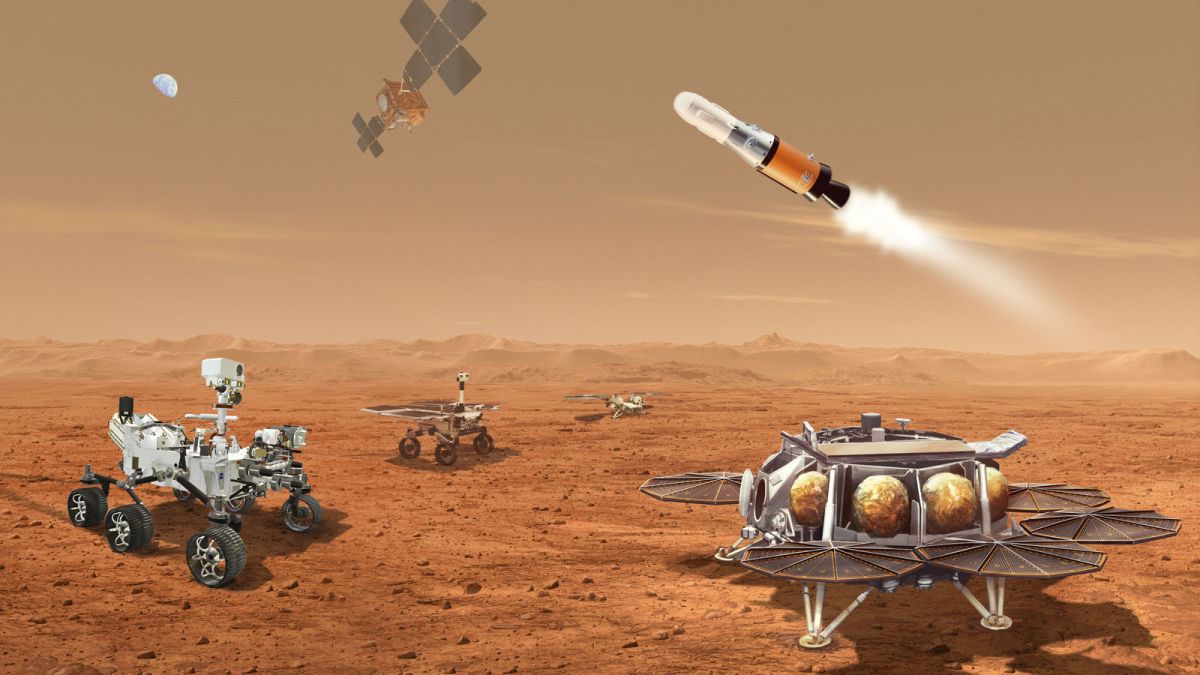
www.space.com
How NASA will launch Mars samples off the Red Planet
The 10-foot-tall (3 meters) Mars Ascent Vehicle will blast rock, sediment and atmospheric samples off Mars in the early 2030s, in the first-ever rocket launch from the surface of another planet.
Science & Tech
Work is progressing on a vital part of NASA's Mars sample return plans.
The Mars Ascent Vehicle (MAV) is a small, lightweight, two-stage solid-propellant rocket with a big assignment: blast rock, sediment and atmospheric samples off Mars in the early 2030s, in the first-ever rocket launch from the surface of another planet.
The MAV, which is being developed by Lockheed Martin Space of Littleton, Colorado, will be packaged with NASA's Sample Retrieval Lander (SRL), another big part of the sample return campaign. The two-in-one spacecraft — MAV and SRL — will touch down near or in Jezero Crater, the spot where NASA's Perseverance rover is already busily gathering Mars samples. A second lander, carrying a European Space Agency (ESA) "fetch rover," will touch down in the same area as well.
The fetch rover will bring Perseverance's samples to the MAV. The rocket will launch into Mars orbit, where ESA's Earth Return Orbiter (ERO) will grab its sample-filled container. The ERO will then haul the samples to Earth, ejecting them via an Earth Entry System (EES) for a high-speed, no-parachute landing in the Utah desert in 2033, if all goes according to plan.
That sample return capsule, also designed by Lockheed Martin, is made of a lightweight composite structure, enveloped by a special thermal protective material provided by NASA's Ames Research Center in California's Silicon Valley.
Humanity has never returned pristine samples from Mars before, and there are significant challenges facing the team that's trying to make it happen, explained Steve Sides, Lockheed Martin's senior program manager for the Mars Ascent Vehicle Integrated System (MAVIS) based in Huntsville, Alabama.
Aim it, point and shoot
The MAV is less than 10 feet tall and 1.5 feet in diameter (3 by 0.5 meters), Sides told Space.com. "It's a relatively small rocket," he said, "so aim it, point and shoot."
Lockheed Martin Space is providing NASA with multiple MAV test units and a flight unit. Work under the contract includes designing, developing, testing and evaluating the integrated MAV system and designing and developing the rocket's ground support equipment.
The cost-plus-fixed-fee MAVIS contract has a potential value of $194 million and will extend for six years. The clock is ticking. The SRL-MAV duo are currently scheduled to launch in 2028 from NASA's Kennedy Space Center in Florida, kicking off the long trek to the Red Planet.
"The goal is to land there early in the year and take off before [Martian] winter hits," Sides explained.
























































